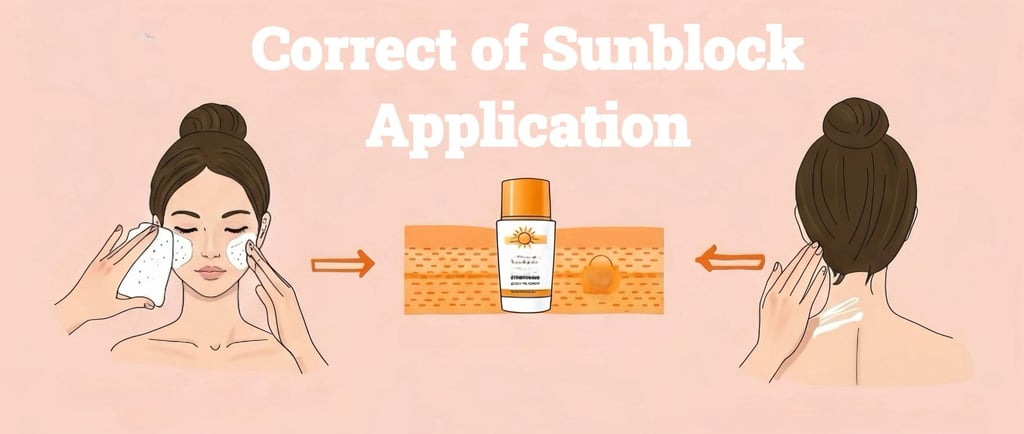How to protect the skin from the harmful sun ray (sun block application)


Protecting your skin from the sun's harmful ultraviolet (UV) rays is essential for maintaining skin health and preventing long-term damage. Sunblock, also known as sunscreen, plays a crucial role in shielding your skin from these harmful effects.
Why Sun Protection is Important
UV radiation from the sun is categorized into two types:
UVA rays: These rays penetrate deep into the skin and are primarily responsible for premature aging, such as wrinkles and age spots.
UVB rays: These rays affect the outer layer of the skin, causing sunburns and contributing to the development of skin cancers.
Both types of UV radiation can cause significant skin damage, even on cloudy days or during cooler seasons. Therefore, daily application of sunblock is vital for comprehensive skin protection.
Selecting the Appropriate Sunblock
When choosing a sunblock, consider the following factors:
Broad-Spectrum Protection: Opt for sunblocks labeled "broad-spectrum," indicating protection against both UVA and UVB rays.
Sun Protection Factor (SPF): Select a sunblock with an SPF of at least 30 for adequate protection. Higher SPF values offer increased protection, but no sunscreen can block 100% of UV rays.
Water Resistance: If engaging in activities involving water or sweating, choose a water-resistant sunblock to ensure lasting protection.
Skin Type Consideration: For sensitive skin, consider mineral-based sunblocks containing zinc oxide or titanium dioxide, which are less likely to cause irritation.
Proper Application of Sunblock
To maximize the effectiveness of sunblock, follow these guidelines:
Apply Generously: Use enough product to cover all exposed skin areas. An average-sized adult requires approximately one ounce (about a shot glass full) to cover the body adequately.
Timing: Apply sunblock 15–30 minutes before sun exposure to allow proper absorption and effectiveness.
Reapplication: Reapply every two hours, or more frequently if swimming, sweating, or towel-drying.
Comprehensive Coverage: Ensure all exposed areas are covered, including often overlooked spots like ears, neck, hands, and feet. For the scalp, consider using a spray or powder sunscreen.
Additional Sun Protection Measures
Incorporate the following practices alongside sunblock application:
Seek Shade: Stay in shaded areas, especially during peak UV hours (10 a.m. to 4 p.m.), to reduce direct sun exposure.
Wear Protective Clothing: Use clothing that covers arms and legs, a wide-brimmed hat to protect the face and neck, and sunglasses that block UV rays to safeguard the eyes and surrounding skin.
Avoid Tanning Beds: Refrain from using tanning devices, as they expose the skin to harmful UV radiation and increase the risk of skin cancer.
Conclusion
Consistent and correct application of sunblock, combined with additional protective measures, is essential for safeguarding your skin against harmful UV rays. By incorporating these practices into your daily routine, you can enjoy outdoor activities while minimizing the risk of sun-induced skin damage and related health issues.
